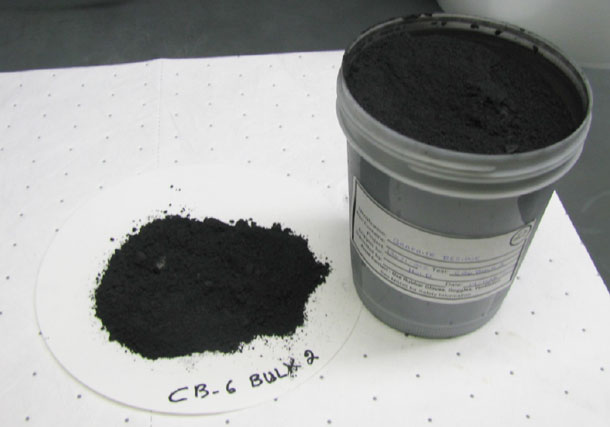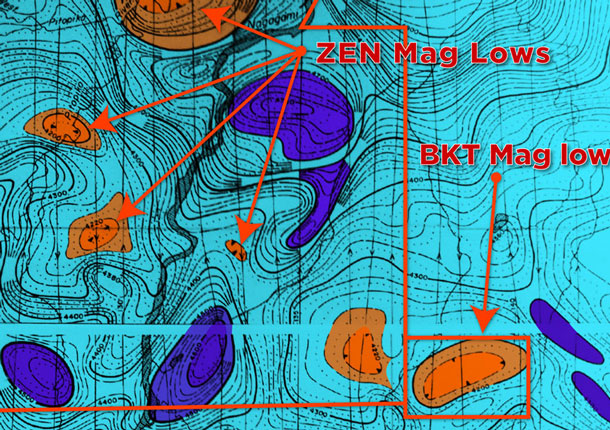
 THUNDER BAY – Mining – There have been several reports of graphite discoveries in Northern Ontario. Zenyatta Ventures has been reporting on the purity of the graphite it has found in its Albany project in Northwestern Ontario. What is exciting about graphite is graphene.
THUNDER BAY – Mining – There have been several reports of graphite discoveries in Northern Ontario. Zenyatta Ventures has been reporting on the purity of the graphite it has found in its Albany project in Northwestern Ontario. What is exciting about graphite is graphene.
The amazing electrical, optical and strength properties of graphene, a single-atom-thick layer of carbon, have been extensively researched over the last decade. Recently, the material has been studied as a coating that might confer electrical conductivity while maintaining other properties of the underlying material.
But the “transparency” of such a graphene coating to wetting — a measure of the degree to which liquids spread out or bead up on a surface — is not as absolute as some researchers had thought. New research at MIT shows that for materials with intermediate wettability, graphene does preserve the properties of the underlying material. But for more extreme cases — superhydrophobic surfaces, which intensely repel water, or superhydrophilic ones, which cause water to spread out — an added layer of graphene does significantly change the way coated materials behave.
That’s important, because these extreme cases are generally of greatest interest. For example, coating a superhydrophobic material with graphene was seen as a possible way of making electronic circuits that would be protected from short-circuiting and corrosion in water. But it’s not quite that simple, the new research shows.
The findings were recently published in the journal Physical Review Letters by professors Daniel Blankschtein and Michael Strano, graduate student Chih-Jeh Shih, and three other MIT postdocs and students.
Blankschtein, the Herman P. Meissner ’29 Professor of Chemical Engineering, has studied wetting properties for a long time. He had not previously examined graphene, but decided to explore its wettability now that it’s a material of great interest to researchers.
Because graphene’s transparency to wettability turned out not to be perfect, Blankschtein says, “this finding may be viewed as a negative result.” But, he adds, “it is nevertheless extremely important to the scientific community, because it [shows] what can actually be accomplished in practice.”
Most electrically conductive materials, he points out, are hydrophilic: Water spreads readily on them, thoroughly wetting the surface. “On the other hand,” he says, “for many electronic and military applications, it is important to fabricate hydrophobic, electrically conductive surfaces.” And while graphene’s transparency to wettability is not perfect, it may still be good enough for such applications, he says.
This research, which included both theoretical modeling and experimental confirmation, shows that by depositing a large graphene sheet, grown by a process called chemical vapor deposition, on another material’s surface, “it would be possible to induce electrical conductivity on the surface, while partially preserving the desired surface wetting behavior,” Blankschtein says. In fact, he adds, the contact angle of such a surface — the measure of how well it prevents wetting — “is believed to be one of the highest attainable on a flat, electrically conductive surface to date.”
Shih, the lead author of the paper, says, “We have demonstrated that the wettability of a transparent, graphene-coated surface can be manipulated without undermining its thermal/electrical conductivity.” That’s useful because “in general, conductive surfaces have very high wettability due to their high surface tension, and it is generally very challenging to produce a thermally/electrically conductive surface with tunable wettability” — wettability that can be controlled almost at will.
The team describes this partial transmission of the underlying characteristics as “translucency,” rather than transparency, of wettability.
By selecting a particular combination of an underlying material with a graphene coating, different combinations of electrical, optical and wetting characteristics can be achieved, Shih says: “People can control the wetting properties of the substrate … this breakthrough successfully decouples the conductivity and wettability of a material.”
What’s more, this opens up new possibilities for practical devices, because the materials involved are already widely used in industry, Shih says: “Due to its compatibility with today’s semiconductor processes, many exciting opportunities may be pursued in the areas of microelectronics, nanoscale heat transfer and microfluidic devices — to simultaneously engineer desired wettability, heat transfer and electronic transport.”
Blankschtein emphasizes that in addition to the potential applications, “I’m excited about this from a fundamental point of view.” It shows, he says, that “you can’t assume that you can just take a substrate and drop graphene on it without perturbing the wetting behavior.” By understanding this complex behavior, “we can learn how to take advantage of that.”






